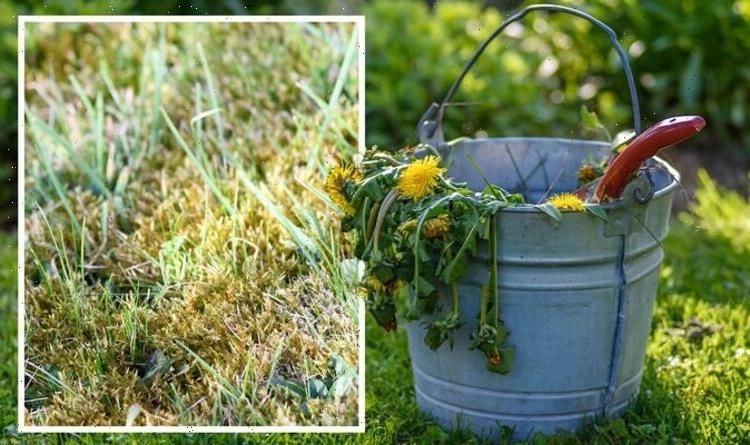
Lawn weeds: Three ways to tell if your garden grass has weeds
03/14/2022Bunnings show how to remove weeds and moss from your lawn
We use your sign-up to provide content in ways you’ve consented to and to improve our understanding of you. This may include adverts from us and 3rd parties based on our understanding. You can unsubscribe at any time. More info
Weeds are considered a nuisance by many gardeners, despite being natural growers in everything from potted plants to garden lawns. While some weeds will stand out from their surrounding growth, lawn weeds can be trickier to spot amongst the green blades of grass. Getting rid of unwanted weeds is relatively easy to do when you know what to look for, and the Royal Horticultural Society (RHS) has revealed the three key signs that you have weeds in your lawn.
What are lawn weeds?
Weeds come in all shapes and sizes and can grow almost anywhere thanks to their resilient qualities.
Lawn weeds are able to withstand standard lawn care, such as cutting and scarifying, making them fierce competition for the growing grass around them.
While some lawn weeds are beneficial for pollinators and other wildlife, they are constantly competing with healthy blades of grass for air, nutrients and water, wreaking havoc on your growing lawn during spring and summer.
There are a number of ways to tackle invasive lawn weeds, but first you should know what you’re looking for.


How to tell if your lawn has weeds
There are several ways lawn weeds are noticed, all of which are visible in the appearance of your growing grass.
While you would expect your lawn to look a little worse for wear after the harsh winter, an ongoing problem could be an indicator of invasive weeds spreading throughout your garden.
According to the RHS, there are three key signs of lawn weeds, including bare patches in the grass, and multiple shades of brown or green – but what are the key characteristics of each sign?

Patchy grass
If your grass is struggling to compete with fast-growing weeds, a lack of growth could leave your lawn looking bare and patchy in places.
According to the RHS, this patchy appearance can present in three different ways.
Empty patches will see little to no growth of new grass in areas of your lawn.
An uneven growth rate will create patches which look less full than others as the blades reach varying heights.
The patches could also appear in the form of different colours or textures compared with the rest of your lawn.
Keep an eye out for brown, or lighter shades of green throughout random sections of the grass.
DON’T MISS:
Lawn advice: Common lawn mistakes to ‘avoid’ to grow ‘healthy’ grass [INSIGHT]
Lawn care: The ‘spiking’ trick to remove all signs of moss [REVEAL]
‘Perfect’ frequency and height to cut grass according to pro [ANALYSIS]

A flowering lawn
Many gardeners choose to embrace the natural growth of lawn weeds to encourage a wild-flower meadow to blossom.
While this can look stunning in the setting of a cottage-style or wild garden, small flowering buds are not to everyone’s taste when it comes to styling a lawn.
According to the RHS, weed-induced flowers can occur in almost any lawn – even in grass that is closely mowed and well—kept, though it is most common in longer grass.
Dandelions, daisies, clover and buttercups are the most common types of flowering lawn weeds.
Discoloured patches of grass
Patches of dead-looking grass are just one sign of invasive lawn weeds, but two-tone growth is also another key indicator of a busy lawn.
The hardy nature of weeds means they are able to survive most forms of extreme weather, including drought and heavy rainfall.
Lawn weeds will tend to perform better or worse than lawn grasses, so it is often a telltale sign when areas of your lawn are discoloured during bouts of extreme weather.
During particularly dry spells, the RHS recommends looking out for patches that remain green while the rest of the grass fades to a more yellow tone.
Source: Read Full Article

